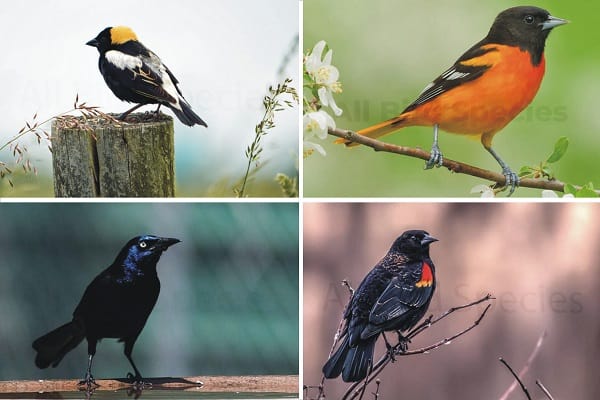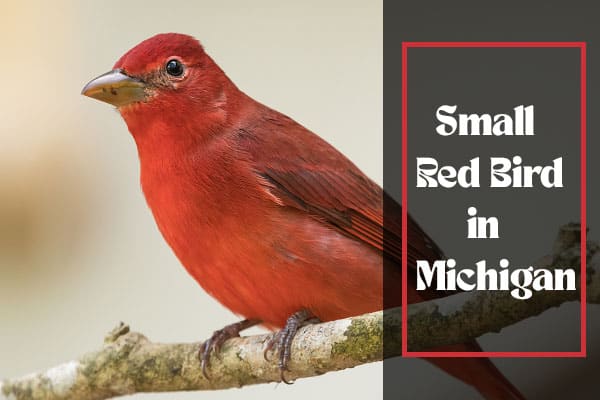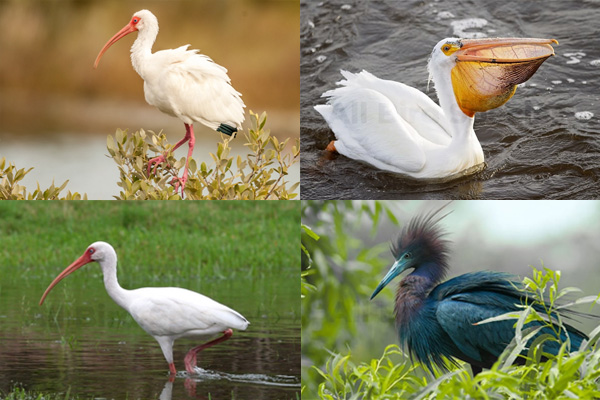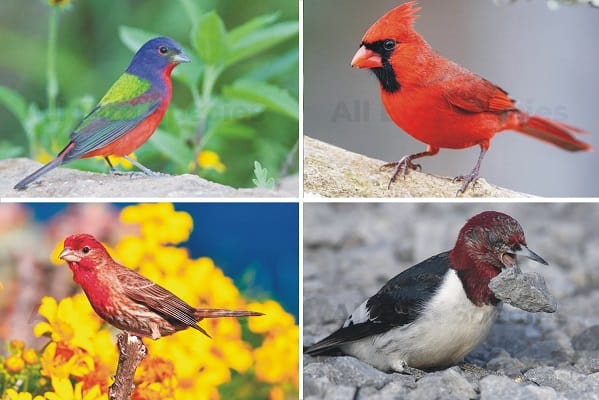Ever heard of Birds With Mohawks? Forget ordinary feathers—these rebels of the sky boast unique mohawk hairstyles that redefine avian style. In my researched exploration, I discovered 17 fascinating birds, each flaunting a distinctive crest that adds flair to the skies. Join me on this journey into the world of avian rebels and their captivating plumage.
When you are deeply attracted by the unique charm of these beautiful birds, have you ever thought about keeping this natural beauty around you in another form?
For example, Custom Earrings. Through customization, these earrings can not only capture the essence of bird feathers but also incorporate modern design elements, allowing the wearer to communicate with these natural spirits at any time.
Whether utilized as an accessory, cherished within a personal collection, or gifted to others, it serves as a reflection of individual taste and a highlight of cherished hobbies

Explore Small Birds with Mohawks (Names + Description)
1. Northern Cardinal

The Northern Cardinal (Cardinalis cardinalis), colloquially known as the redbird, is a striking birds with mohawks found across North America. Here are some key details about this beautiful species:
Appearance:
Males: Vibrant red plumage with a black mask on the face and a prominent crest atop the head.
Females: Reddish-olive color with a gray mask around the beak.
Juveniles: Lack the distinctive red-orange beak until they mature fully in the fall.
Habitat:
Woodlands, gardens, shrublands, and wetlands.
Diet:
Mainly granivorous (seeds), but also feeds on insects and fruit.
Behavior:
Males mark territories with their melodious songs.
During courtship, males feed seeds to females beak-to-beak.
Reproduction:
Clutch typically contains three to four eggs, with multiple clutches produced each year.
Fun Fact:
Named after Roman Catholic Church officials who wear distinctive red robes and caps.
Range:
From southeastern Canada through the eastern United States (from Maine to Texas) and southward to Mexico.
Also introduced in a few locations like Bermuda, Hawaii, and southern California.
2. Tufted Titmouse Birds with Mohawks
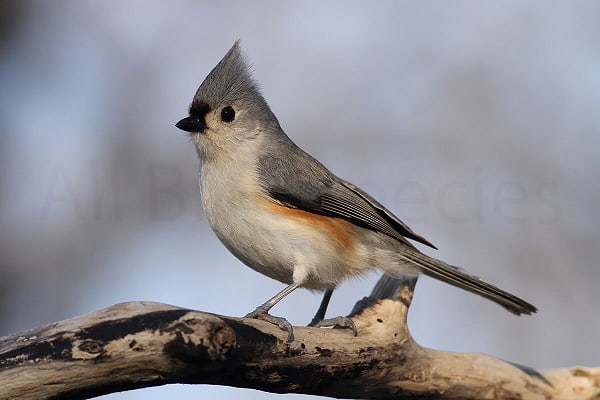
Certainly! The Tufted Titmouse (Baeolophus bicolor) is a delightful little birds with mohawks commonly found in eastern deciduous forests. Here are some fascinating details about this active and crested songbird:
- Appearance:
- Coloration: A white front with a gray upper body.
- Distinctive Features:
- Black Cap: It sports a black forehead, which gives it a distinctive appearance.
- Tufted Crest: The tufted gray crest atop its head adds to its charm.
- Size: Small and agile, with a length of about 6 inches (15 cm).
- Habitat:
- Forest Dweller: The Tufted Titmouse frequents woodlands, gardens, and shrublands.
- Feeder Visitor: It’s a frequent visitor to bird feeders.
- Behavior:
- Eager and Active: These birds flit through canopies, hang from twig-ends, and drop in to feeders.
- Seed Crackers: When a titmouse finds a large seed, it carries it to a perch and cracks it open with sharp whacks of its stout bill.
- Diet:
- Varied Menu: Consumes seeds, nuts, fruits, and insects.
- Nesting:
- Tree Nester: It nests in tree holes.
- Vocalization:
- Whistled Song: The Tufted Titmouse has a distinctive whistled song.
- Conservation Status:
- Least Concern: It is non-migratory and has a stable population.
3. Pileated Woodpecker

The Pileated Woodpecker (Dryocopus pileatus) is one of the most impressive forest birds in North America. Here are some fascinating details about this striking woodpecker:
- Appearance:
- Size: Nearly as large as a crow, it stands out with its bold markings.
- Coloration: Mostly black with bold white stripes down the neck.
- Crest: A flaming-red crest adorns its head.
- Habitat:
- Found in forests across eastern North America.
- Prefers mature forests with dead or decaying trees.
- Diet:
- Carpenter Ants: Pileated Woodpeckers excavate deep into rotten wood to access carpenter ant nests.
- Distinctive Holes: They leave characteristic rectangular holes in dead trees.
- Behavior:
- Listen for their loud drumming sounds as they hammer on trees in search of ants.
- Their nest holes provide crucial shelter for other species like swifts, owls, ducks, bats, and pine martens.
- Conservation Status:
- Least Concern: The Pileated Woodpecker has a stable population.
4. Steller’s Jay
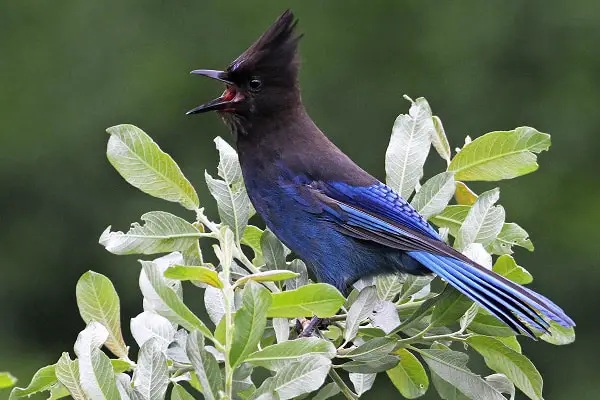
The Steller’s Jay (Cyanocitta stelleri) is a striking birds with mohawks native to western North America and the mountains of Central America. Here are some fascinating details about this intelligent and handsome bird:
- Appearance:
- Coloration: Deep blue and black plumage.
- Crest: It sports a long, shaggy crest on its head.
- Front and Rear: The front of its body is black, while the rear is deep blue.
- Eyebrows: Adults along the Pacific Coast have blue vertical ‘eyebrows’ above each eye.
- Size and Variation:
- Length: Approximately 12–13 inches (30–34 cm).
- Regional Variation: Steller’s Jays show significant regional variation throughout their range. Birds from the north have blackish-brown heads, gradually becoming bluer-headed farther south.
- Bill and Crest: Steller’s Jays have a more slender bill and longer legs than the Blue Jay. In northern populations, their crest is much more pronounced.
- Habitat:
- Inhabits pine-oak and coniferous forests.
- Name Origin:
- Named after Georg Wilhelm Steller, the first European to record them during an Alaskan expedition in 1741.
- Range:
- From south Alaska and coastal west Canada to northwest Oregon (northwest USA).
- Also found in Haida Gwaii (off west Canada) and parts of Mexico.
- Behavior:
- Smart and gregarious.
- Sometimes colloquially called a “blue jay,” but distinct from the Blue Jay (Cyanocitta cristata) of eastern North America.
5. Cedar Waxwing
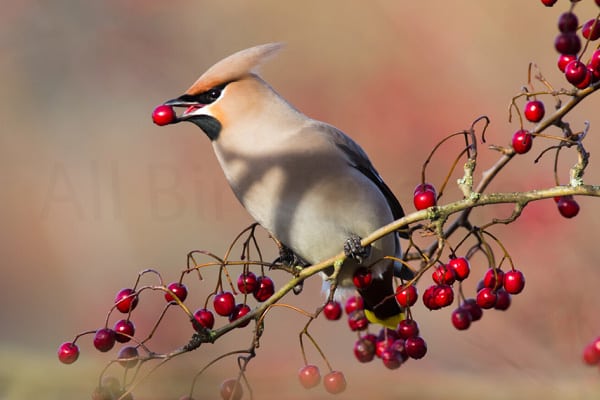
The Cedar Waxwing (Bombycilla cedrorum) is a medium-sized, sleek bird with a distinctive appearance. Here are some fascinating details about this avian beauty:
- Appearance:
- Coloration: Mostly brown, gray, and yellow.
- Crest: It has a subdued crest that often lies flat and droops over the back of its head.
- Wings: Broad and pointed, resembling those of a starling.
- Tail: Fairly short and square-tipped.
- Red Wax Droplets: The most prominent feature is a small cluster of red wax-like droplets on the tips of its secondary flight feathers. These droplets are attributed to pigmented and medullary layers surrounded by a transparent cuticle.
- Diet:
- Consumes cedar cones, fruit, holly berries, and insects.
- Habitat:
- Breeds in open wooded areas in southern Canada.
- Wintering range includes the southern half of the United States, Central America, and the far northwest of South America.
- Vocalizations:
- Cedar Waxwings produce very high-pitched whistles and buzzy trills.
- Fun Fact:
- The wax droplets on their wings may be the same color as the madrone berries they eat.
- Conservation Status:
- Listed as Least Concern on the IUCN Red List.
- Oldest Observed Individual:
- Eight years and two months old.
6. Great Crested Flycatcher

The Great Crested Flycatcher (Myiarchus crinitus) is a large insect-eating bird belonging to the tyrant flycatcher family. Here are some interesting details about this remarkable bird:
- Appearance:
- Size: It is a fairly large flycatcher with long and lean proportions.
- Coloration: The Great Crested Flycatcher has rich reddish-brown accents and a lemon-yellow belly.
- Crest: Contrary to its name, its crest is not especially prominent.
- Habitat:
- It dwells mostly in the treetops of dense leafy forests in the eastern United States.
- Rarely found on the ground.
- Behavior:
- Distinctive Call: The bird’s very distinctive call is an emphatic rising whistle.
- It swoops after flying insects and may crash into foliage in pursuit of leaf-crawling prey.
- The only Eastern flycatchers that nest in cavities, sometimes using nest boxes.
- Range:
- The most widespread member of the genus Myiarchus in North America.
- Found over most of the eastern and mid-western portions of the continent.
7. Cockatiel
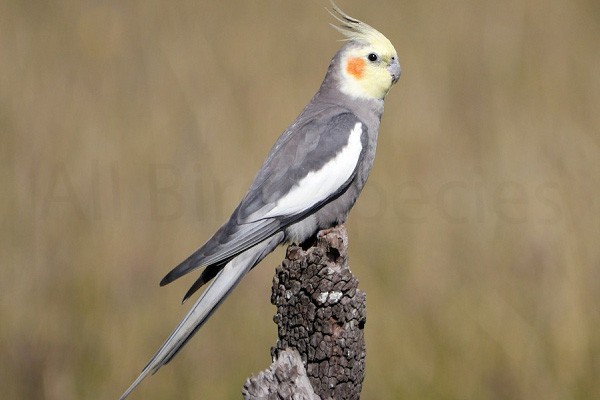
The Cockatiel (Nymphicus hollandicus), also known as the weero or quarrion, is a medium-sized parrot native to Australia. Here are some interesting facts about this delightful bird:
- Appearance:
- Coloration: Cockatiels have a soft, grayish-brown plumage with subtle yellow and white accents.
- Crest: They sport a small, elegant crest on their heads.
- Size: Adult cockatiels measure around 12 to 13 inches (30 to 34 cm) in length and weigh between 2 to 4 ounces.
- Habitat:
- Native to Australian wetlands, scrublands, and bushlands.
- Behavior and Personality:
- Social Creatures: Cockatiels are prized as household pets and companion parrots worldwide.
- Easy to Breed: They are relatively easy to breed compared to other parrots.
- Second in Popularity: As caged birds, cockatiels are second in popularity only to budgerigars (budgies).
- Taxonomy and Etymology:
- Genus Name: The genus name, Nymphicus, reflects the early European explorers’ admiration for the birds’ beauty, naming them after mythical nymphs.
- Specific Name: Hollandicus refers to New Holland, an old name for Australia.
- Biological Classification:
- Cockatiels are now classified as the smallest subfamily of the cockatoo family (Cacatuidae).
- They share features like the erectile crest, gallbladder, powder down, and facial feathers covering the sides of the beak with other cockatoos.
- Lifespan:
- With proper care, cockatiels can live 15 to 20 years, and sometimes even up to 30 years (though this is rare)
8. Pyrrhuloxia
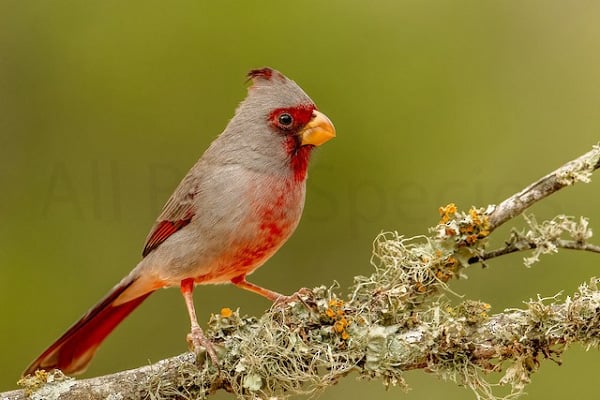
The Pyrrhuloxia (Cardinalis sinuatus), also known as the desert cardinal, is a medium-sized North American songbird found in the American Southwest and northern Mexico. Here are some fascinating details about this unique bird:
- Appearance:
- The Pyrrhuloxia combines the scientific terms for bullfinches and crossbills, although it is not directly related to those species.
- It belongs to the Cardinalis genus, which also includes the more widespread and familiar Northern Cardinal.
- The bird’s bill is similar in shape to that of crossbills.
- Its plumage is crisp gray and red, with a longer, elegant crest and a stubby, parrot-like yellow bill.
- Habitat:
- The Pyrrhuloxia is a year-round resident of desert scrub, mesquite thickets, and woodland edges.
- It occupies the southwestern half of Texas, roughly the southern third of New Mexico, and the southeastern region of Arizona.
- Behavior:
- During the breeding season, Pyrrhuloxias are fiercely territorial and vocally defend their territories.
- In winter, they forget their disputes and join together in large foraging flocks.
9. Wood Duck
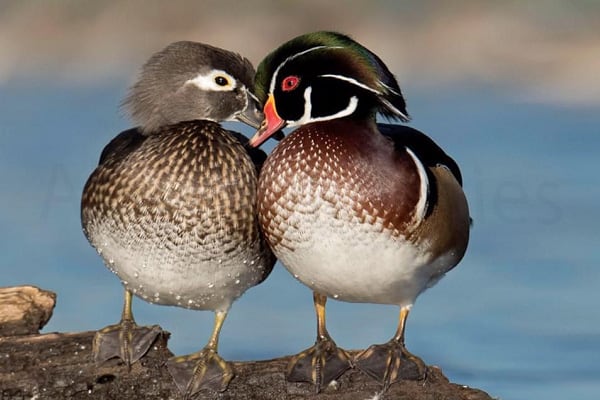
The Wood Duck (Aix sponsa), also known as the Carolina duck, is a captivating species of perching duck found in North America. Here are some intriguing details about this colorful waterfowl:
- Appearance:
- Male: The drake (male) wood duck is one of the most vibrant North American waterfowl. It boasts stunning multicolored iridescent plumage, red eyes, and a distinctive white flare down the neck.
- Female: The female is less colorful, with a white eye-ring and a whitish throat. Both genders have crested heads.
- Speculum: The speculum (wing patch) is iridescent blue-green with a white border on the trailing edge.
- Size:
- Wood ducks are medium-sized, with adults measuring 47 to 54 cm (19 to 21 inches) in length and a wingspan of 66 to 73 cm (26 to 29 inches). Their weight ranges from 454 to 862 grams (16.0 to 30.4 ounces), about three-quarters the length of an adult mallard.
- Behavior:
- Breeding Habitat: Wood ducks inhabit wooded swamps, shallow lakes, marshes, ponds, and creeks in the eastern United States, parts of southern Canada, the west coast of the United States, and the west coast of Mexico.
- Nesting: They nest in cavities in trees close to water, sometimes using nesting boxes in wetland locations. Unlike most other ducks, wood ducks have sharp claws for perching in trees.
- Reproductive Ability: In southern regions, they can produce two broods in a single season, making them the only North American duck capable of doing so.
- Eggs: Females typically lay seven to fifteen eggs, which incubate for about thirty days.
- Fun Fact:
- Wood ducks may nest up to a mile away from their water source, leading to interesting adaptations.
- Conservation Status:
- Listed as Least Concern by the IUCN.
10. Eurasian Hoopoe

The Eurasian Hoopoe (Upupa epops) is a distinctive and colorful birds with mohawks found across Europe, Asia, and parts of Africa. Here are some fascinating details about this unique species:
- Appearance:
- Coloration: The Eurasian hoopoe is a cinnamon-colored bird with striking black and white wings.
- Crest: It boasts a tall, erectile crest on its head.
- Tail: A broad white band across a black tail adds to its charm.
- Bill: The hoopoe has a long, narrow, downcurved bill.
- Call:
- Its call is a soft “oop-oop-oop.”
- Habitat:
- Native to Europe, northern Africa, and parts of Asia.
- Migratory in the northern part of its range.
- Taxonomy:
- The Eurasian hoopoe was formally described by Carl Linnaeus in 1758.
- It belongs to the genus Upupa.
- Subspecies:
- Several subspecies vary in size and plumage color.
- Notably, the Madagascar hoopoe is a related subspecies.
- Description:
- Medium-sized bird, 25–32 cm (9.8–12.6 in) long, with a 44–48 cm (17–19 in) wingspan.
- Distinctive undulating flight pattern.
- Bill adapted for probing soil for insects.
- Conservation Status:
- The Eurasian hoopoe is common in its range but declining in Western Europe.
- Listed as Least Concern by the IUCN.
11. Victoria Crowned Pigeon
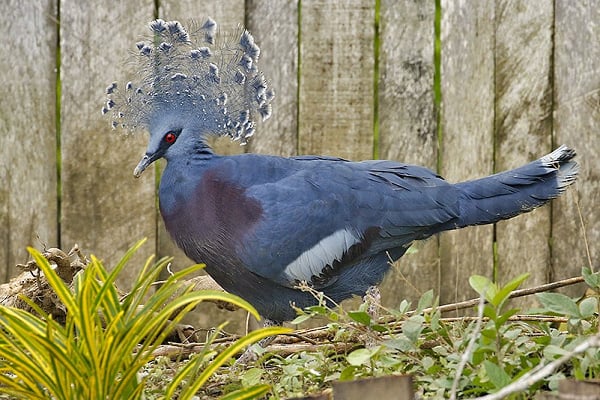
The Victoria crowned pigeon (Goura victoria) is a large, bluish-grey pigeon native to the New Guinea region. Here are some fascinating details about this unique bird:
- Appearance:
- It has elegant blue lace-like crests on its head.
- The maroon breast and red irises add to its striking appearance.
- Its feather crest is conspicuously white-tipped.
- The wing coverts have a row of feathers that are paler blue-gray with maroon tips, forming a distinct wing bar.
- Size and Weight:
- Typically 73 to 75 cm (29 to 30 inches) long, but some specimens can exceed 80 cm (31 inches).
- It weighs around 3.5 kg (7.7 lb), making it the largest surviving species of pigeon on Earth.
- Distinctive Features:
- The Victoria-crowned pigeon claps its wings very loudly when it takes off.
- Its mating calls consist of deep hoots.
- When defending territories, it makes a resounding “whup-up” call.
- Contact calls are deep, muffled, and somewhat human-like.
- Subspecies:
- Two subspecies exist: G. v. beccarii on the mainland of New Guinea and G. v. victoria on the islands of Yapen, Biak, and Supiori.
- The nominate subspecies (G. v. victoria) is smaller and has darker overall plumage.
- Name Origin:
- Its name commemorates Queen Victoria of Britain.
12. Red-whiskered Bulbul
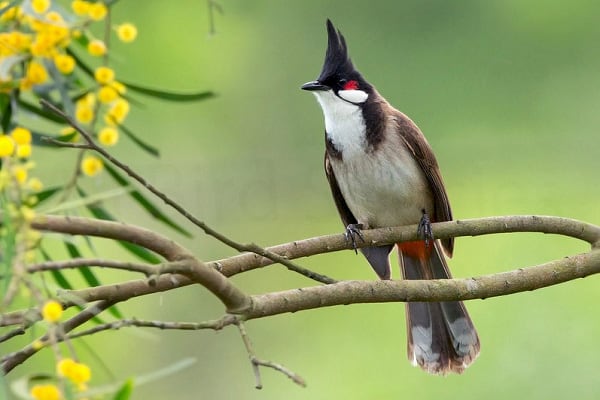
The Red-whiskered Bulbul (Pycnonotus jocosus), also known as the crested bulbul, is a passerine bird native to Asia. Here are some interesting details about this delightful bird:
- Appearance:
- It has a striking red face patch and a distinctive crest on its head.
- The plumage is brown above and whitish below.
- The wings display a white wing bar.
- The tail feathers have white tips.
- Habitat:
- The red-whiskered bulbul is a resident frugivore found mainly in tropical Asia.
- It has been introduced in many tropical areas worldwide, including Australia, Florida, and Mauritius.
- Behavior:
- It has a loud three or four-note call.
- Feeds on fruits and small insects.
- Perches conspicuously on trees.
- Taxonomy:
- The red-whiskered bulbul was formally described by Carl Linnaeus in 1758.
- Its specific epithet, jocosus, means “merry” in Latin.
- It belongs to the genus Pycnonotus.
- Subspecies:
- Nine subspecies are recognized, varying in plumage and distribution.
13. Golden Pheasant
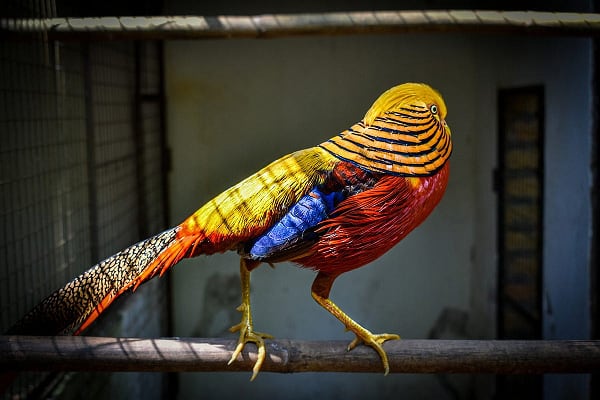
The Golden Pheasant (Chrysolophus pictus), also known as the Chinese pheasant or rainbow pheasant, is a captivating game birds with mohawks native to the mountainous forests of western China. Here are some fascinating details about this colorful and elegant bird:
- Appearance:
- Male:
- The adult male is a sight to behold, measuring 90–105 cm (35–41 inches) in length, with its tail accounting for two-thirds of the total length.
- It has a golden crest and rump, a bright red body, and a deep orange “cape” that can be spread in display.
- The face is covered by an alternating black and orange fan, except for its bright yellow eye with a pinpoint black pupil.
- Female:
- The female is more subdued, with mottled brown plumage similar to the female common pheasant.
- She is darker and more slender, with a proportionately shorter tail.
- Both males and females have yellow legs and bills.
- Male:
- Habitat:
- Native to the forests of western China.
- Feral populations have been established in various countries, including the United Kingdom, Canada, the United States, Australia, and New Zealand.
- Behavior:
- Feeds on grains, seeds, and invertebrates.
- Roosts in trees at night.
- Conservation Status:
- Classified as Least Concern by the IUCN.
14. Crested Tit
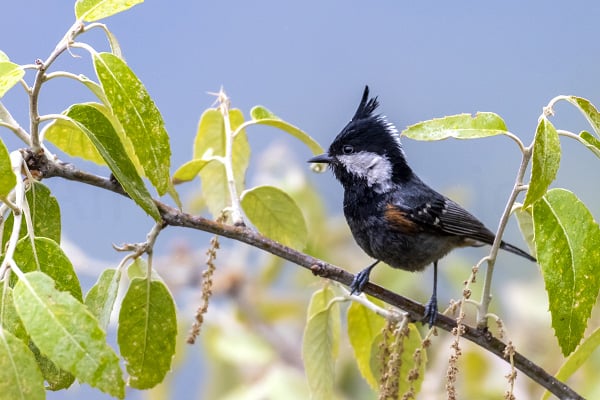
The Crested Tit (Lophophanes cristatus), also known as the European crested tit, is a charming inhabitant of coniferous and mixed woodlands, forests, and pine plantations. Here are some interesting details about this distinctive bird:
- Appearance:
- It is the only small songbird in northern Europe with a distinct crest.
- The crested tit has a mostly pale face with a blackish frame to the cheeks.
- Habitat:
- Widespread resident breeder in coniferous forests throughout central and northern Europe.
- Also found in deciduous woodlands in France and the Iberian Peninsula.
- Distribution in Great Britain:
- Chiefly restricted to the ancient pinewoods of Inverness and Strathspey in Scotland.
- Seldom strays far from its haunts.
- A few vagrant crested tits have been seen in England.
15. Purple-crested Turaco
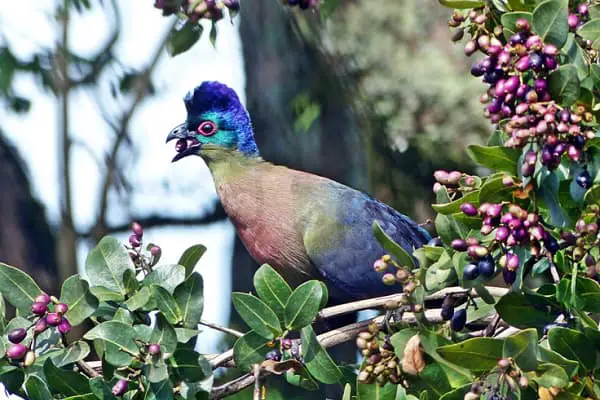
The Purple-crested Turaco (Gallirex porphyreolophus), also known as the purple-crested lourie, is a captivating birds with mohawks found in various parts of Africa. Here are some interesting details about this colorful and elegant species:
- Appearance:
- The purple-crested turaco has a purple-colored crest above a green head, adorned with a red ring around its eyes.
- Its black bill contrasts with the vibrant plumage.
- The neck and chest display shades of green and brown.
- The rest of its body is a rich purple, with striking red flight feathers.
- Habitat:
- These turacos inhabit moist woodlands and evergreen forests.
- They are primarily frugivorous, feeding mainly on fruits.
- Range:
- The purple-crested turaco is found in several African countries, including Burundi, Kenya, Malawi, Mozambique, Rwanda, South Africa, Eswatini, Tanzania, Uganda, Zambia, and Zimbabwe.
- Its southernmost occurrence is at the Mtamvuna River on the KwaZulu-Natal – Eastern Cape border.
- Seed Dispersal:
- These turacos play an essential role in seed dispersal.
- After consuming fruits, they regurgitate the seeds intact, allowing them to germinate nearby.
- Their digestion of invasive plants still allows for high rates of germination and low seed retention.
- Ceremonial Significance:
- The crimson flight feathers of the purple-crested turaco and related species are important in the ceremonial regalia of the Swazi royal family.
- Conservation Status:
- Classified as Least Concern by the IUCN.
16. Smew

The smew (Mergellus albellus) is a captivating species of duck and the only living member of the genus Mergellus. Here are some interesting details about this elegant waterfowl:
- Appearance:
- Male (Drake):
- The drake smew has a striking appearance, often described as having a “cracked ice” or “panda” look.
- It appears very black-and-white in flight.
- The head and upperparts are white, while the breast and sides are black.
- In breeding plumage, it has a distinctive black mask around the eyes.
- Oval white wing patches are visible during flight.
- Female and Immature Males:
- Grey birds with chestnut foreheads and crowns.
- At a distance, they can be confused with the ruddy duck and are often known as “redhead” smew.
- The smew’s bill is hooked and serrated, which helps it catch fish when diving.
- It measures 38–44 cm (15–17 inches) in length, with a wingspan of 56–69 cm (22–27 inches), and weighs 450–650 g.
- Male (Drake):
- Habitat and Range:
- Breeds in the northern taiga of Europe and the Palearctic.
- Requires trees for breeding.
- Lives on fish-rich lakes and slow rivers.
- As a migrant, it winters on sheltered coasts or inland lakes in the Baltic Sea, the Black Sea, northern Germany, and the Low Countries.
- Vagrants have been recorded in North America.
- Breeding and Behavior:
- Nests in tree holes, such as old woodpecker nests.
- Shy and easily disturbed.
- Lays 7–11 cream-colored eggs, incubated by the female for 26–28 days.
- Ducklings leave the nest soon after hatching and learn to fly within about 10 weeks.
- Conservation Status:
- Classified as Least Concern by the IUCN, although its population is decreasing.
17. Sulphur-crested Cockatoo
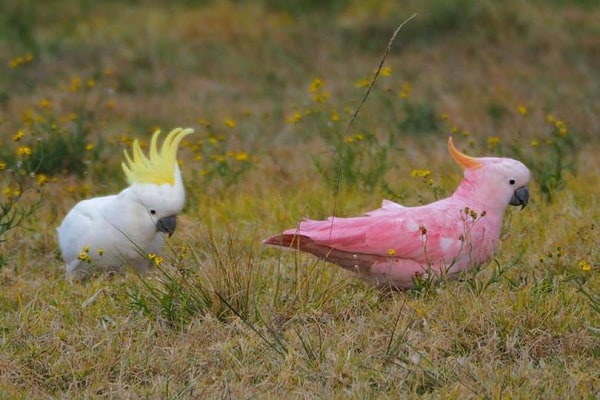
The sulphur-crested cockatoo (Cacatua galerita) birds with mohawks is a relatively large white cockatoo found in wooded habitats in Australia, New Guinea, and some of the islands of Indonesia. These striking birds can be locally very numerous, although they are sometimes considered pests. Here are some key details about them:
- Distribution:
- In Australia, sulphur-crested cockatoos also are the birds with mohawks which are found widely in the north and east, ranging from the Kimberley region to as far south as Tasmania. They avoid arid inland areas with few trees.
- They are numerous in suburban habitats in cities such as Adelaide, Melbourne, Canberra, Sydney, Brisbane, and Perth.
- Beyond Australia, they occur throughout most of New Guinea and on nearby smaller islands.
- Subspecies:
- There are four recognized subspecies:
- C. g. triton: Found in New Guinea and surrounding islands.
- C. g. Eleonora: Restricted to the Aru Islands in eastern Indonesia.
- C. g. Fitzroy: Occurs in northern Australia from Western Australia to the Gulf of Carpentaria.
- C. g. Galeria: Known as the greater sulfur-crested cockatoo, it ranges from Cape York to Tasmania.
- There are four recognized subspecies:
- Introduced Species:
- Sulphur-crested cockatoos have been introduced to various regions outside their natural range:
- Perth (Australia), which is far outside their natural range.
- Singapore, where their numbers are estimated to be between 500 and 2000.
- Palau and New Zealand (where the introduced populations may number less than 1000).
- Hawaii and various islands in Wallacea (e.g., Kai Islands and Ambon), although it’s unclear if they have become established there.
- Sulphur-crested cockatoos have been introduced to various regions outside their natural range:
- Description:
- Sulphur-crested cockatoos are 44–55 cm (17.5–21.5 in) long.
- The plumage is overall white, while the underwing and tail are tinged yellow.
- The expressive crest is yellow.
- Males typically have almost black eyes, whereas females have more red or brown eyes.
- Behavior:
- Highly intelligent birds, are well known in aviculture but can be demanding pets.
- They can be noisy and are skilled at mimicry.
- Conservation Status:
- Classified as Least Concern by the IUCN.
FAQ’s:
Q1: What are the birds with mohawks called?
A bird with a mohawk-like crest is often referred to simply as a “crested” bird.
Q2: What birds has a blue mohawks?
The Steller’s Jay is known for its sleek blue-black plumage and distinctive mohawk-like crest.
Q3: What kind of bird has an orange mohawk?
The Eurasian Hoopoe features a blend of orange, black, and white plumage, creating a striking mohawk effect.
Q4: Do all cardinals have mohawks?
No, not all Cardinals have mohawks. The Northern Cardinal is one exception with its vibrant red crest.
Q5: What animal has a mohawk?
Apart from birds, some mammals also exhibit mohawk-like crests. For example, the Crested Porcupine has quills that resemble a mohawk.
Q6: What kind of bird looks like a pigeon with a mohawk?
The Victoria Crowned Pigeon resembles a pigeon with a regal blue-gray crest that resembles a crown.
Q7: What birds with red mohawks?
The Golden Pheasant stands out with its vibrant plumage and impressive red mohawk.


